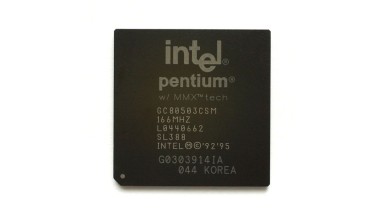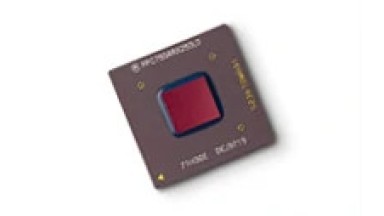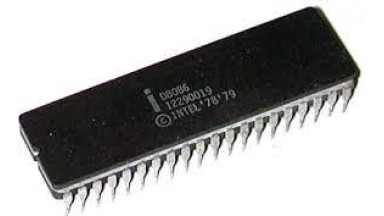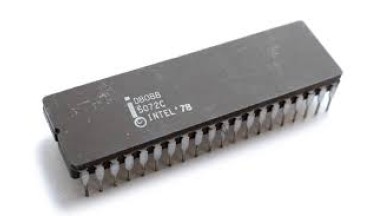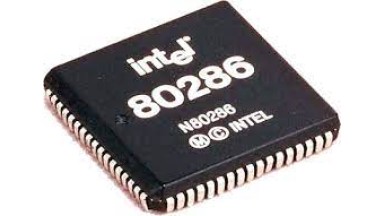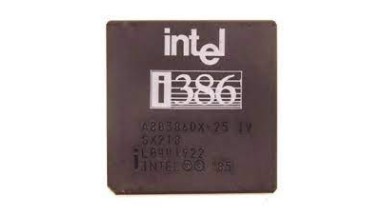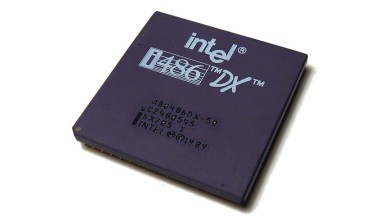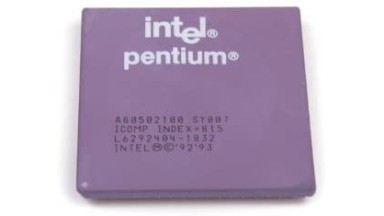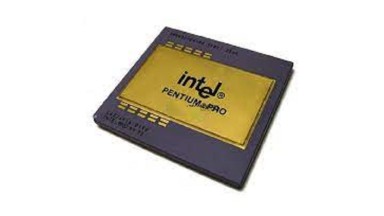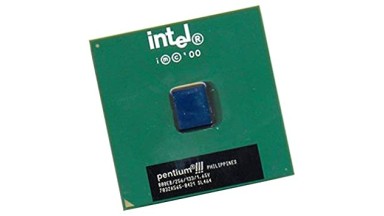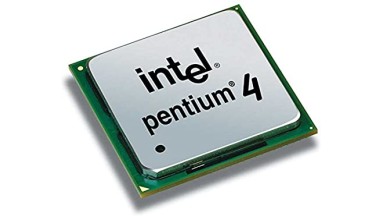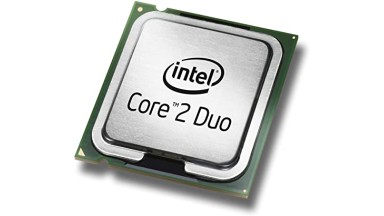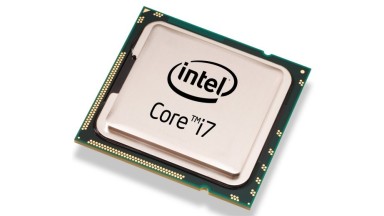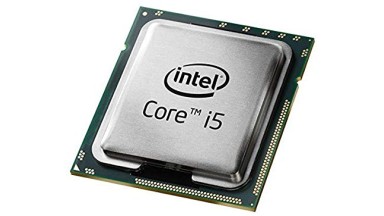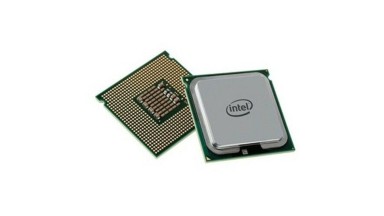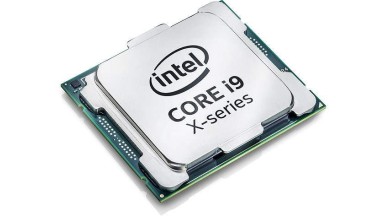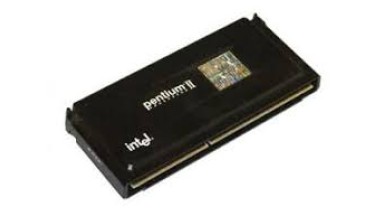
Pentium II contemporary microprocessors
Pentium MMX
Manufacturer: Intel
Launched: 1996
Bits: 32
Clock: 120 MHz
Transistors: 4 500 000
Technology: 0.28 nanometers
Voltage: 2.8 V
It included a set of instructions developed by Intel intended to improve processor performance in multimedia applications.
AMD, Intel's main competitor, would implement the 3DNow! floating-point instruction set.
Launched: 1996
Bits: 32
Clock: 120 MHz
Transistors: 4 500 000
Technology: 0.28 nanometers
Voltage: 2.8 V
It included a set of instructions developed by Intel intended to improve processor performance in multimedia applications.
AMD, Intel's main competitor, would implement the 3DNow! floating-point instruction set.
Other microprocessors in the family of Pentium II
Intel 8086
Manufacturer: Intel
Launched: 1978
Bits: 16
Clock: 4.77 MHz
Transistors: 29 000
Technology: 3 nanometers
The first 16-bit microprocessor designed by Intel.
It was the first member of the popular x86 architecture, used to this day.
Launched: 1978
Bits: 16
Clock: 4.77 MHz
Transistors: 29 000
Technology: 3 nanometers
The first 16-bit microprocessor designed by Intel.
It was the first member of the popular x86 architecture, used to this day.
Intel 8088
Manufacturer: Intel
Launched: 1979
Bits: 16
Clock: 4.77 MHz
Transistors: 29 000
Technology: 3 nanometers
A reduced-cost version of the Intel 8086 with a data bus reduced to 8 bits so that it could use circuitry from previous-generation computer manufacturers and thus reduce computer costs.
Launched: 1979
Bits: 16
Clock: 4.77 MHz
Transistors: 29 000
Technology: 3 nanometers
A reduced-cost version of the Intel 8086 with a data bus reduced to 8 bits so that it could use circuitry from previous-generation computer manufacturers and thus reduce computer costs.
Intel 80286
Manufacturer: Intel
Launched: 1982
Bits: 16
Clock: 6 MHz
Transistors: 134 000
Technology: 1.5 nanometers
Launched: 1982
Bits: 16
Clock: 6 MHz
Transistors: 134 000
Technology: 1.5 nanometers
Intel 80386
Manufacturer: Intel
Launched: 1985
Bits: 32
Clock: 12 MHz
Transistors: 275 000
Technology: 1.5 nanometers
Voltage: 5 V
One of the first 32-bit architecture processors.
Launched: 1985
Bits: 32
Clock: 12 MHz
Transistors: 275 000
Technology: 1.5 nanometers
Voltage: 5 V
One of the first 32-bit architecture processors.
Intel 80486
Manufacturer: Intel
Launched: 1989
Bits: 32
Clock: 16 MHz
Transistors: 1 200 000
Technology: 1 nanometers
Voltage: 5 V
The Intel 486 processor was the first to offer an integrated math coprocessor (FPU) that significantly accelerated computing operations.
Launched: 1989
Bits: 32
Clock: 16 MHz
Transistors: 1 200 000
Technology: 1 nanometers
Voltage: 5 V
The Intel 486 processor was the first to offer an integrated math coprocessor (FPU) that significantly accelerated computing operations.
Pentium
Manufacturer: Intel
Launched: 1993
Bits: 32
Clock: 60 MHz
Transistors: 3 100 000
Technology: 0.8 nanometers
The Pentium microprocessor had an architecture capable of executing two operations at once.
The Pentium's introduction was intended to eliminate competitors producing clone microprocessors, such as AMD (Advanced Micro Devices), which created the K5, or Cyrix, which produced very good 486s.
Launched: 1993
Bits: 32
Clock: 60 MHz
Transistors: 3 100 000
Technology: 0.8 nanometers
The Pentium microprocessor had an architecture capable of executing two operations at once.
The Pentium's introduction was intended to eliminate competitors producing clone microprocessors, such as AMD (Advanced Micro Devices), which created the K5, or Cyrix, which produced very good 486s.
Pentium Pro
Manufacturer: Intel
Launched: 1995
Bits: 32
Clock: 150 MHz
Transistors: 5 500 000
Technology: 0.5 nanometers
An evolution of the Pentium, but with RISC architecture.
It was very inexpensive, but suffered from a problem with floating-point calculations, which was called flag erratum. It was soon discontinued.
Launched: 1995
Bits: 32
Clock: 150 MHz
Transistors: 5 500 000
Technology: 0.5 nanometers
An evolution of the Pentium, but with RISC architecture.
It was very inexpensive, but suffered from a problem with floating-point calculations, which was called flag erratum. It was soon discontinued.
Pentium MMX
Manufacturer: Intel
Launched: 1996
Bits: 32
Clock: 120 MHz
Transistors: 4 500 000
Technology: 0.28 nanometers
Voltage: 2.8 V
It included a set of instructions developed by Intel intended to improve processor performance in multimedia applications.
AMD, Intel's main competitor, would implement the 3DNow! floating-point instruction set.
Launched: 1996
Bits: 32
Clock: 120 MHz
Transistors: 4 500 000
Technology: 0.28 nanometers
Voltage: 2.8 V
It included a set of instructions developed by Intel intended to improve processor performance in multimedia applications.
AMD, Intel's main competitor, would implement the 3DNow! floating-point instruction set.
Pentium III
Manufacturer: Intel
Launched: 1999
Bits: 32
Clock: 400 MHz
Transistors: 9 500 000
Technology: 0.25 nanometers
Launched: 1999
Bits: 32
Clock: 400 MHz
Transistors: 9 500 000
Technology: 0.25 nanometers
Pentium 4
Manufacturer: Intel
Launched: 2000
Bits: 32
Clock: 1300 MHz
Transistors: 42 000 000
Technology: 0.18 nanometers
Launched: 2000
Bits: 32
Clock: 1300 MHz
Transistors: 42 000 000
Technology: 0.18 nanometers
Intel Core 2
Manufacturer: Intel
Launched: 2006
Bits: 64
Clock: 1060 MHz
Transistors: 151 000 000
Technology: 0.065 nanometers
It covers the Solo (single core), Duo (dual core), Quad (quad core), and Extreme lines.
Launched: 2006
Bits: 64
Clock: 1060 MHz
Transistors: 151 000 000
Technology: 0.065 nanometers
It covers the Solo (single core), Duo (dual core), Quad (quad core), and Extreme lines.
Intel Core i7
Manufacturer: Intel
Launched: 2008
Bits: 64
Clock: 2660 MHz
Transistors: 731 000 000
Technology: 0.045 nanometers
The Core i7 is the first processor to use Intel's Nehalem microarchitecture and is the successor to the Intel Core 2 family.
Launched: 2008
Bits: 64
Clock: 2660 MHz
Transistors: 731 000 000
Technology: 0.045 nanometers
The Core i7 is the first processor to use Intel's Nehalem microarchitecture and is the successor to the Intel Core 2 family.
Intel Core i5
Manufacturer: Intel
Launched: 2009
Bits: 64
Clock: 2660 MHz
Transistors: 774 000 000
Technology: 0.045 nanometers
Core i5 is a term used to designate mid-range or high-midrange processors from Intel. They are characterized by an affordable price and sufficient performance to be used in computers capable of running complex programs or games that require slightly more power.
The i5 family offers an average processing speed of around 3.5 GHz and a cache of around 8 MB.
Launched: 2009
Bits: 64
Clock: 2660 MHz
Transistors: 774 000 000
Technology: 0.045 nanometers
Core i5 is a term used to designate mid-range or high-midrange processors from Intel. They are characterized by an affordable price and sufficient performance to be used in computers capable of running complex programs or games that require slightly more power.
The i5 family offers an average processing speed of around 3.5 GHz and a cache of around 8 MB.
Intel Core i3
Manufacturer: Intel
Launched: 2010
Bits: 64
Clock: 2930 MHz
Transistors: 1 400 000 000
Technology: 0.032 nanometers
Launched: 2010
Bits: 64
Clock: 2930 MHz
Transistors: 1 400 000 000
Technology: 0.032 nanometers
Intel Core i9
Manufacturer: Intel
Launched: 2017
Bits: 64
Clock: 3300 MHz
Transistors: 3 052 000 000
Technology: 0.014 nanometers
Voltage: 1.52 V
Launched: 2017
Bits: 64
Clock: 3300 MHz
Transistors: 3 052 000 000
Technology: 0.014 nanometers
Voltage: 1.52 V
